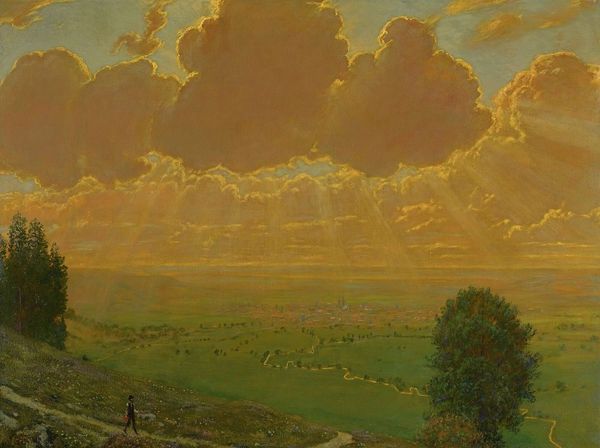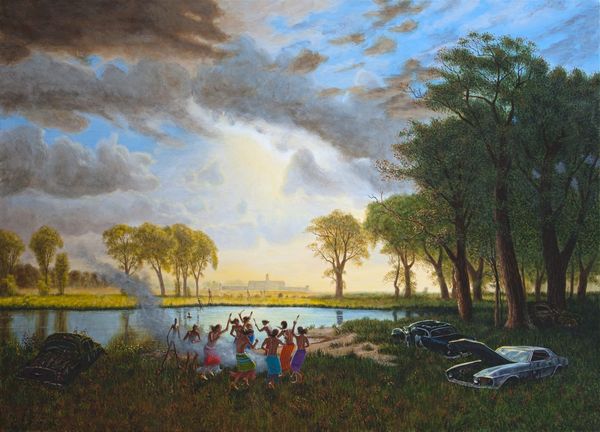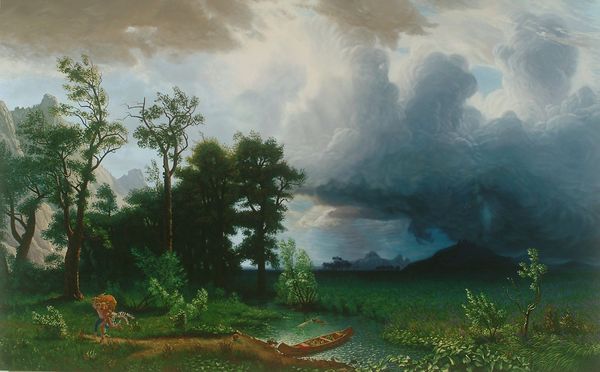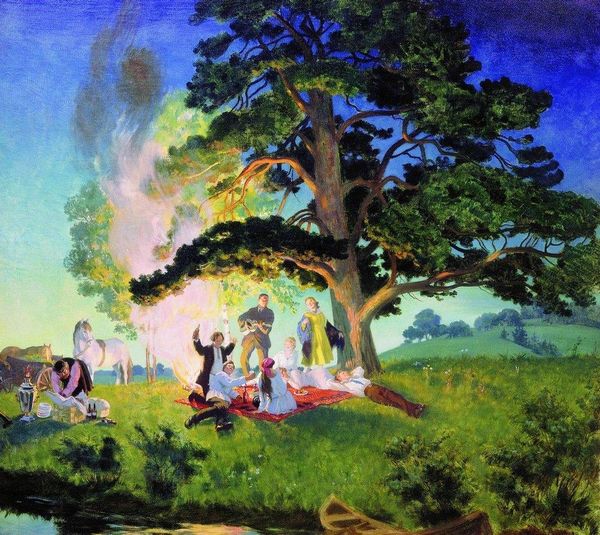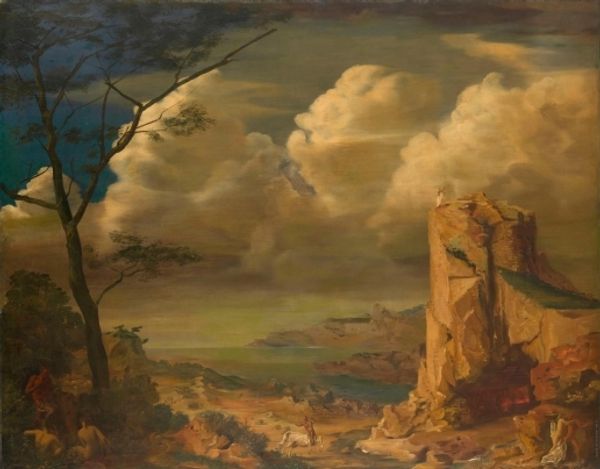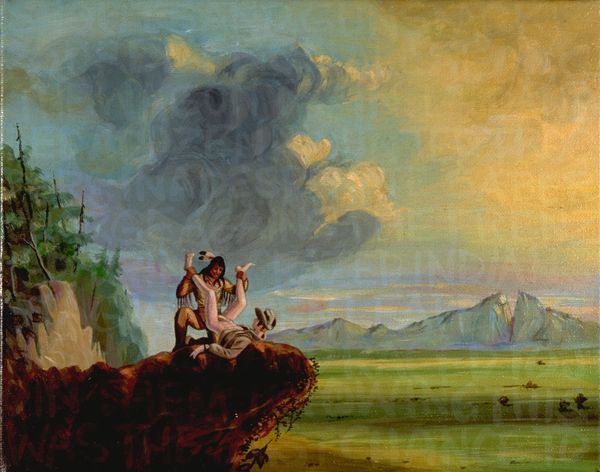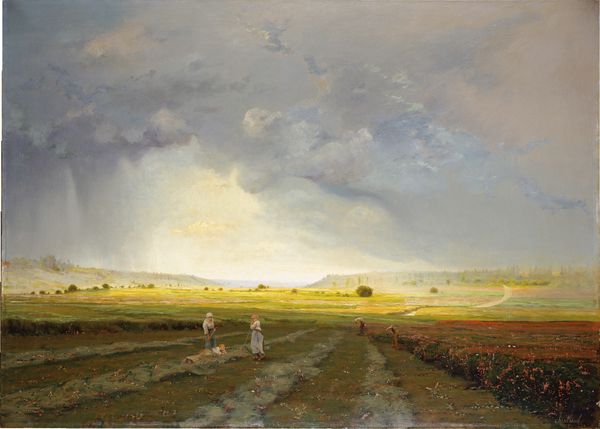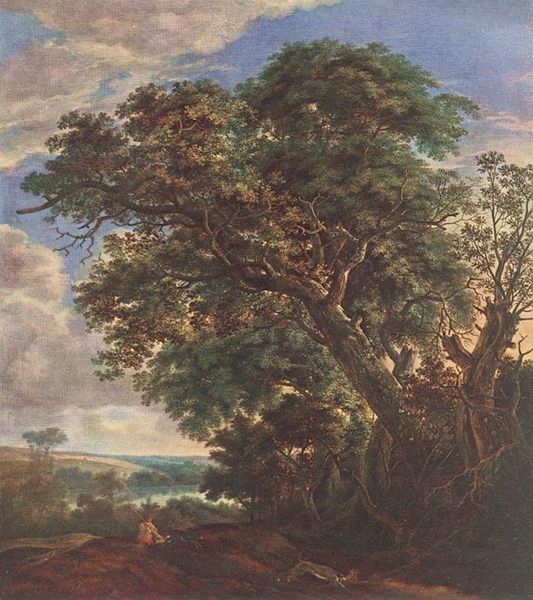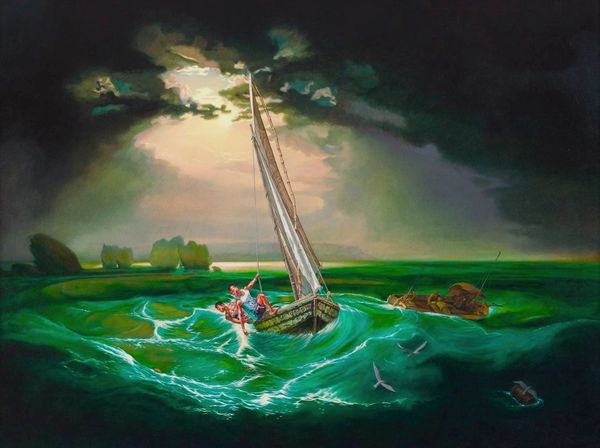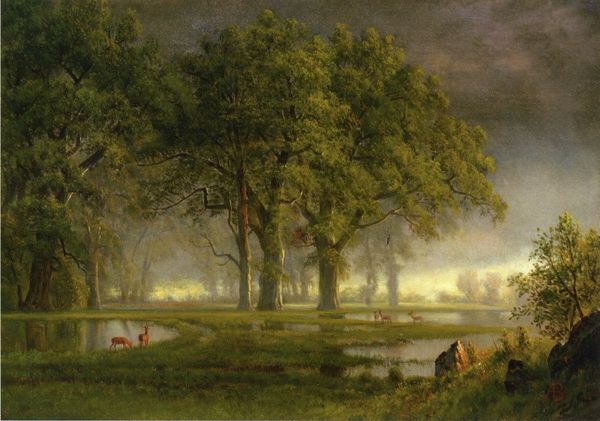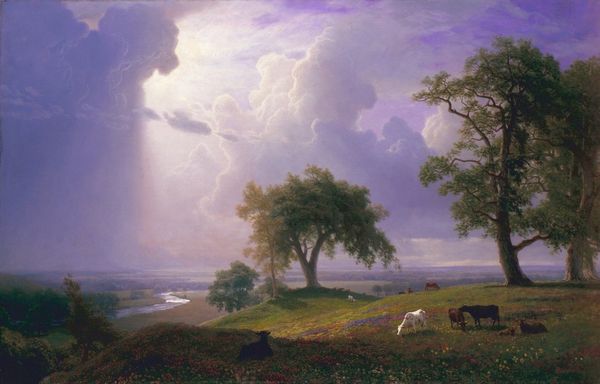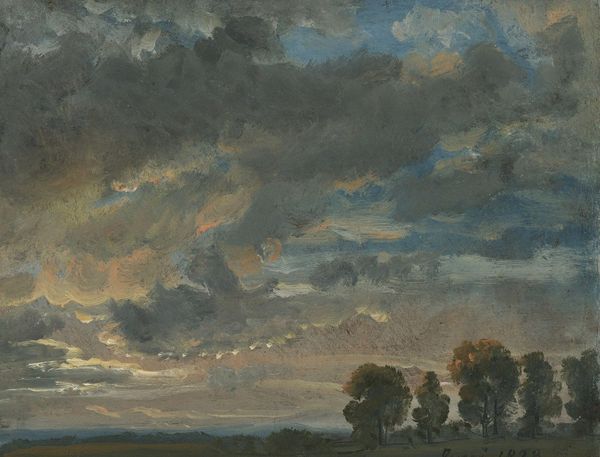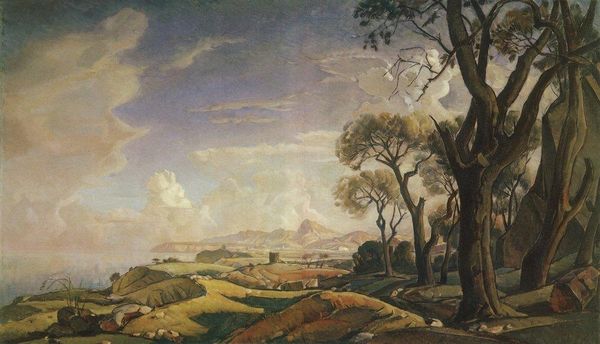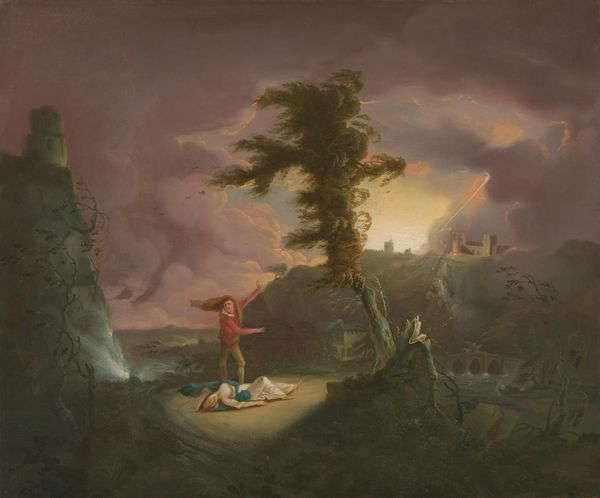
mixed-media, painting, acrylic-paint
#
mixed-media
#
contemporary
#
painting
#
landscape
#
acrylic-paint
#
figuration
#
surrealism
#
surrealism
Copyright: Kent Monkman,Fair Use
Curator: Looking at Kent Monkman’s 2008 piece, "Woe to Those Who Remember From Whence They Came," the first thing I feel is… unsettled. The painting has this almost-storybook idyllic landscape, yet that title hangs over it like the storm cloud in the background, suggesting a darker narrative is at play. Editor: Absolutely. The collision of pastoral beauty and impending doom is classic Monkman. He's deliberately disrupting a visual language, isn't he? Using these tropes to lure you in before revealing something more difficult. It reminds me of settler landscape painting that glossed over colonial violence. Curator: Right! That clash is precisely what grabs me. It's visually stunning, a panorama in mixed-media on canvas. You've got these almost luminist skies contrasted with the sharply defined figures on the hillside, a vibrant splash of color that leads my eye, and this bizarre translucent figure off to the side that I am drawn to but fear simultaneously. Editor: The figures on the hillside tell a story, or perhaps multiple stories. It reads like a procession, or even a forced removal. Look at how Miss Chief Eagle Testickle is depicted off to the side, her pallid form disrupting the otherwise vibrant scene, perhaps gesturing towards trauma and displacement. What do you think of how Monkman incorporates his alter ego into the work? Curator: It's fascinating. It's a bold intervention that blends the personal with the historical. Miss Chief isn't just a figure within the landscape; she seems to haunt it, representing a collective memory of loss and dispossession. Like a warning specter. Monkman's allowing for an interesting intermingling of narratives. The sublime of the traditional landscape painting clashes so fiercely with Miss Chief, so ghostly, the viewer knows something isn't as it should be in this pretty countryside. It echoes the deceptive peace treaties imposed upon indigenous people that masked their own inherent failures. Editor: And by inserting Miss Chief and directly referencing that fraught history, he dismantles any possibility of a neutral reading. The beautiful scenery becomes suspect, complicit. It reminds me that no landscape is innocent, it’s all built on history, on previous ownership. “Woe to Those Who Remember From Whence They Came” becomes both a lament and a demand for accountability. Curator: I agree. What stays with me is the complexity he creates, that unsettling sense that beneath the surface of beauty there lies a history of sorrow. I get the distinct sense that remembrance is a burden. Editor: Exactly. By engaging with these complicated narratives, Monkman urges us to examine not only the past but also the present-day legacies of colonialism.
Comments
No comments
Be the first to comment and join the conversation on the ultimate creative platform.
